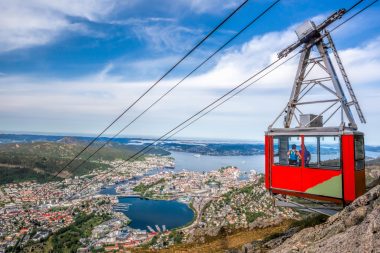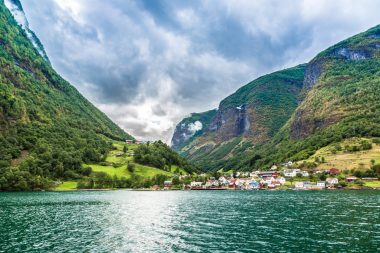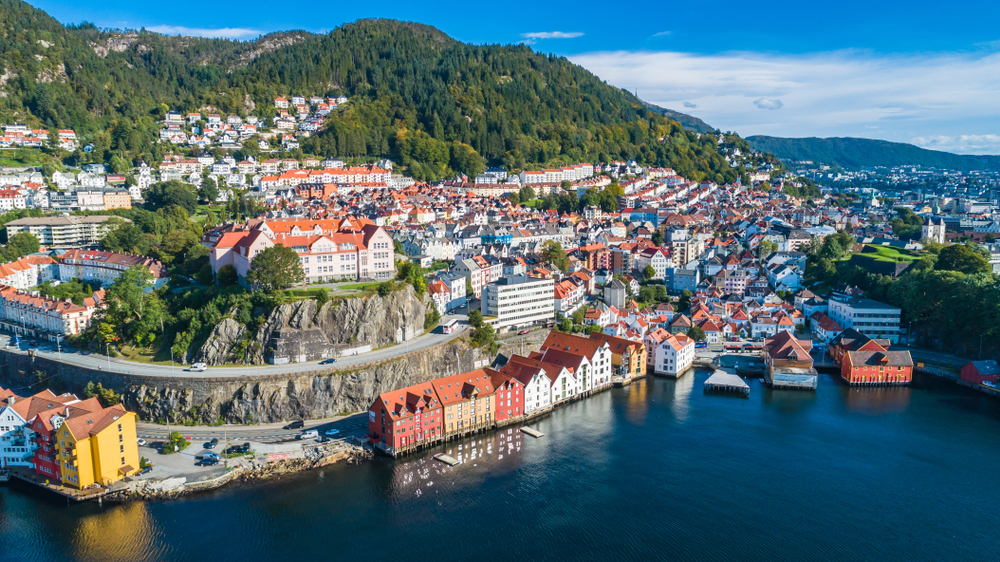In Bergen, a dreamlike city of culture awaits you as the centre of a diverse holiday region. Norway’s second-largest city enchants with its picturesque location in the great triad of water, greenery and stone. Scattered over a labyrinth of wooded hills, fjord shores and islands, the old Hanseatic city immediately appeals to every visitor. Like an amphitheater, the city stretches up the slopes of the wooded heights. Bergen, more than any other city in Scandinavia, is the prototype of a metropolis of seafaring and trade.
Bergen, the gateway to the fjords – colourful, charming and exciting

Leafing through the history book
As in Viking times, Bergen maintains trade relations all over the world and for centuries the city has been the cultural center of western Norway. Seafaring and the fish trade have always been the basis of Bergen’s wealth. Founded in 1070 by Olaf Kyrre and today with almost 220,000 inhabitants, Bergen is the second largest city in Norway – as late as the 17th century, it was far superior to Copenhagen as a trading centre. Germans also lived in Bergen from 1236 – it was not until 1746 that the last German merchants left the city. Until the end of the 19th century, it was the largest Norwegian city, but today it is in second place and is still considered by some to be the “secret capital”. As a royal residence, port and Hanseatic city, Bergen looks back on a glorious past.
Curtain up for Bergen: On a discovery tour at the “Queen of the Fjords”
Where the visitor is drawn may be left to personal interest – everything is worthwhile. Everything worth seeing is easily manageable and can be reached within short distances. Bergen is a city straight out of a picture book: charming, colourful, liveable and modern. If you want to get more than just a superficial impression, you need to stay at least two to three days. The cityscape is characterized by its location “between the seven mountains” – framed by seven mountain ranges and connected by seven island-studded fjords: the center of the city is the market square. A walk along the north side of the harbour to Bryggen brings the past to life. Without a doubt, a visit to the Bryggen harbour district is like travelling back in time. Known? The “Tyskebryggen” (German Bridge) was the quarter of the German Hanseatic League. Perhaps the most famous district of Norway was in the hands of Lübeck’s merchants for 400 years. In the northwestern continuation of the Bryggen lies the Bergenhus Fortress with the medieval Håkon Hall, which once dominated the harbour entrance. The adjacent, massive rosary tower was completed in 1568 as a residence and defensive structure. 
The perfect route and most beautiful forays at a glance
- Path 1 leads around Vågen: On the north side, Bergenhus Fortress rises gloomy and massive. Other visitor destinations are St. Mary’s Church, Bryggen, the Hanseatic Museum, the cathedral, Torget and the aquarium.
- Trail 2 goes around Lille Lungegårdsvann. Worth seeing here are the Permanenten, the Museum of Decorative Arts and the Rasmus Meyer Collections.
- Path 3 leads around the university, which rises on a hill at the southern end of Christiesgate above Bergen city centre. Several museums provide interesting insights into religious and secular art from the Viking Age, the Middle Ages and the Renaissance. On the way back, a visit to Café Opera is worthwhile. The small café restaurant spoils its guests with great dishes, music and art.
Discover Bergen with all your senses
Browse, shop, be amazed: Bergen inspires with chic restaurants, pretty cafés and individual accommodation options. Linger in the charm of the old days, with a great view, rustic and elegant at the same time – everyone will find the perfect domicile in Bergen. Tip: From Fløyen, visitors have the whole of Bergen at their feet. The funicular takes you up to Floyfjell at an altitude of 320 meters. It goes even higher: If you like, you can take the cable car to the panoramic mountain Ulriken (642 meters), and from there you can enjoy a beautiful view of Bergen and the fjord landscape. Both mountains are excellent for hiking. If you stay in Bergen, you stay between fells, fjords and coast: A worthwhile detour leads from Bergen through a labyrinth of fjords that have been bridged several times to the islands of Store and Sotra. In just a few kilometres, the lush green landscape transforms into the frighteningly rugged primeval scenery of the rocky archipelago coast.


